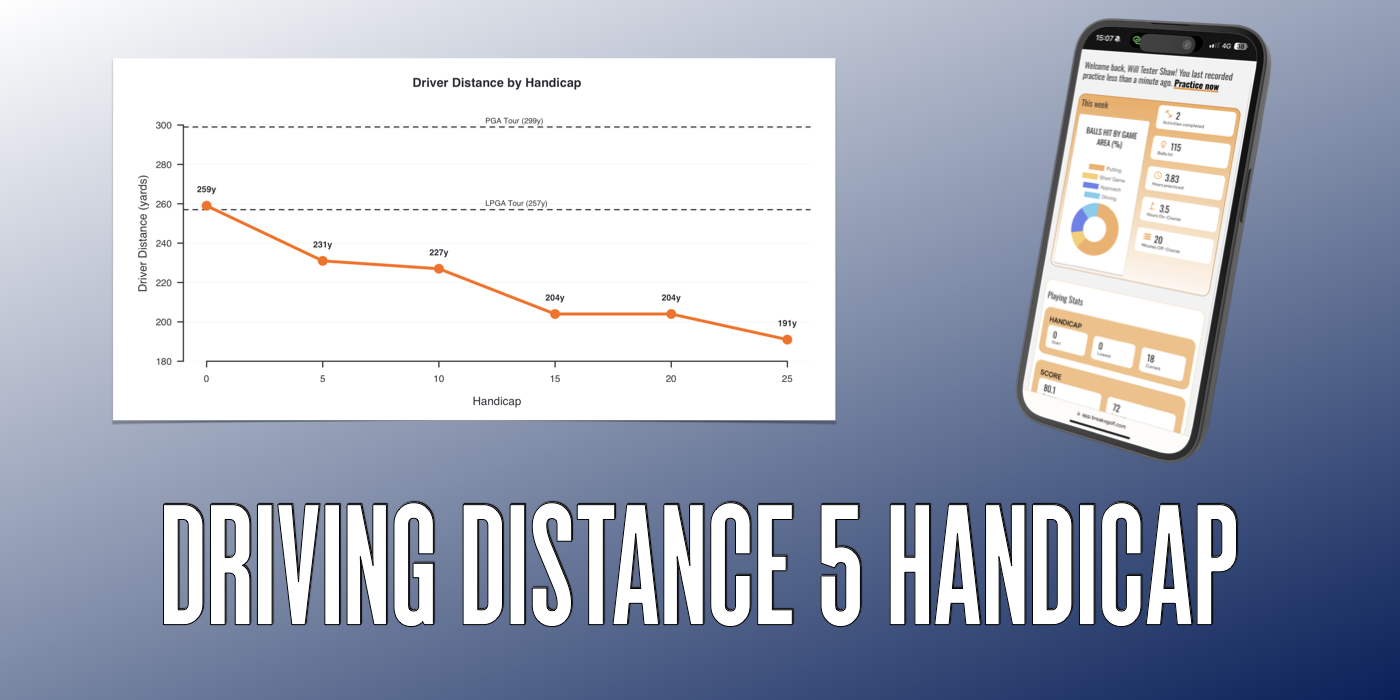Five handicap golfers average 231 yards off the tee with the driver, sitting 28 yards behind scratch players but still well ahead of mid-handicappers.
📊 Five Handicap At-a-Glance:
- Average Driver Distance: 231 yards
- Fairway Accuracy: 49%
- Avg Approach Shot Distance: 173 yards
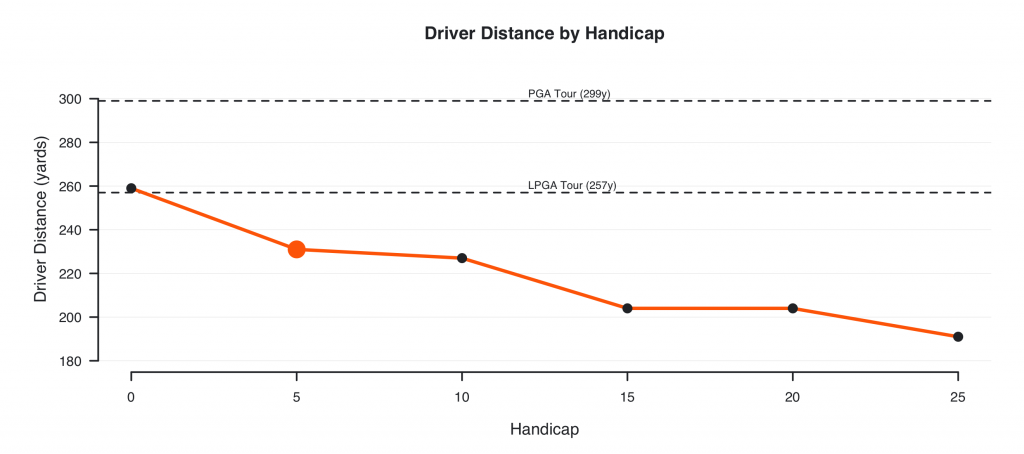
The fairway hit percentage sits at 49%—actually slightly better than scratch golfers—but the trade-off comes in approach shot length.
At 173 yards into greens on average, 5 handicappers are facing mid-to-long irons rather than the wedges and short irons that scratch players enjoy from 154 yards. This 19-yard difference in approach distance explains much of the scoring gap between these two groups. When you’re hitting 7-iron instead of 9-iron into greens, your proximity to the pin and birdie conversion rate naturally drop.
With other clubs, 5 handicappers show solid gapping—217 yards with the 3-wood, 202 with a hybrid, and 194 with a 4-iron. This distance profile keeps most par 4s reachable in regulation whilst still requiring quality iron play.
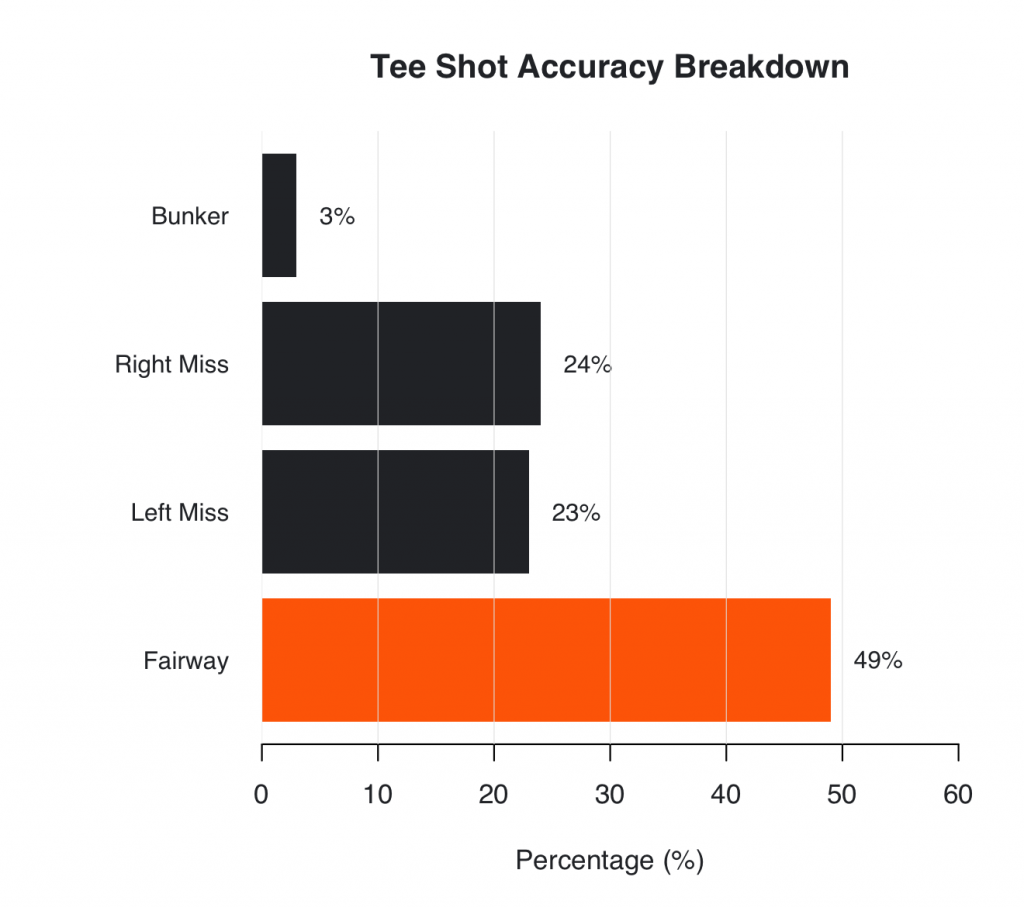
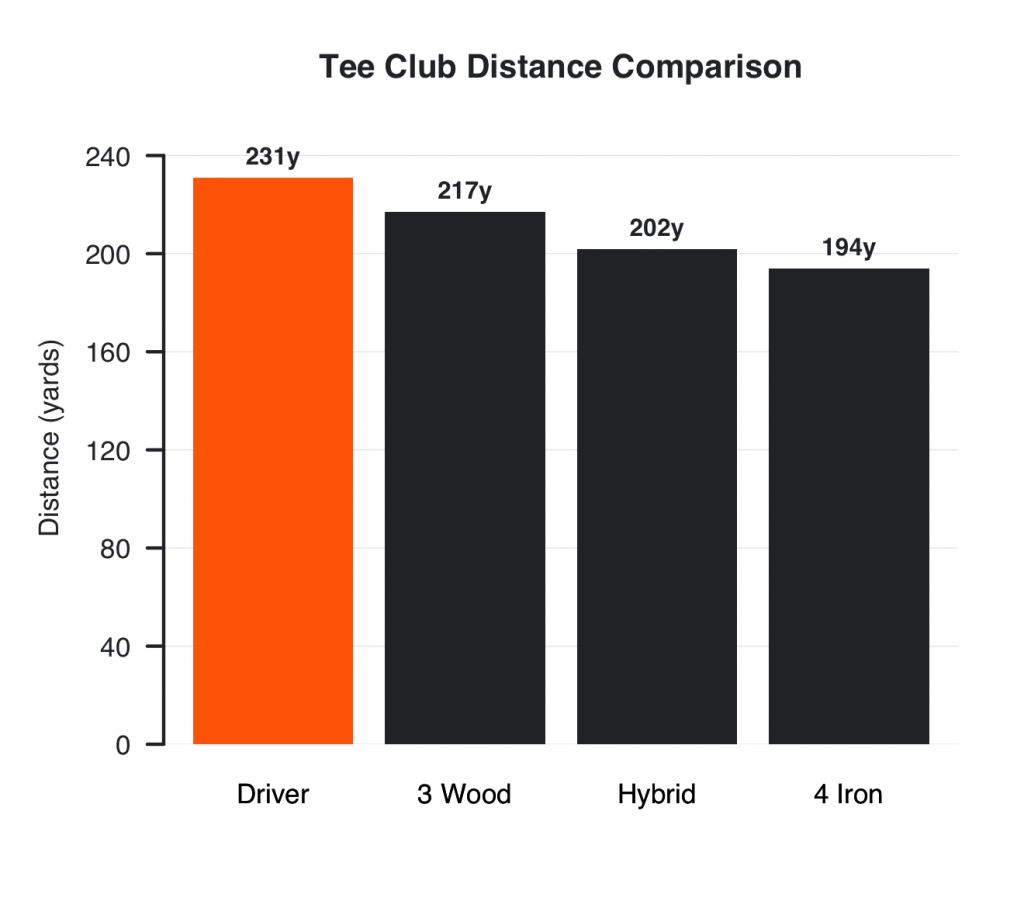
WHAT THIS MEANS FOR YOUR GAME
Here’s the critical insight that often gets overlooked: fairway percentage doesn’t tell the whole story. Across all handicap levels, fairway accuracy stays remarkably similar—ranging from 45-50%. Five handicap golfers also maintain nearly identical angular precision to scratch players.
A 5 handicapper hitting 231 yards and missing by 13 yards is only 3.2° offline. That’s virtually the same as scratch golfers at 3.1°. Compare that to a 25-handicapper hitting 191 yards with a 13-yard miss—that’s 3.9° offline, or 22% less accurate in terms of angle. This proves that the difference between 5 and scratch isn’t about wayward driving—it’s primarily about distance.
These are of course averages, and there will be individual cases that don’t fit this narrative.
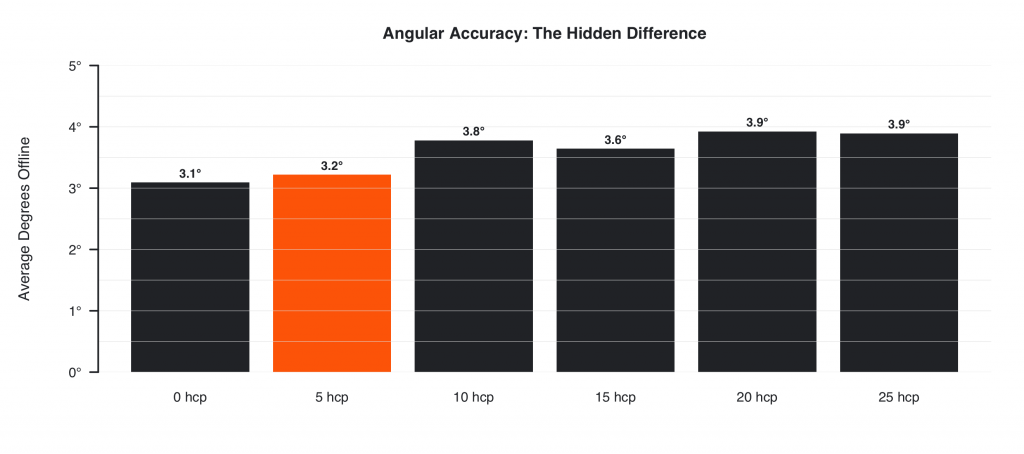
The data also shows a clear correlation between distance and scoring. When 5 handicappers hit it 240 yards or more, they average birdie or better on those holes. Drop to 210 yards (double bogey outcomes), and you’re looking at a 30-yard penalty. Distance creates more margin for error on approach shots, which translates into better scoring opportunities.
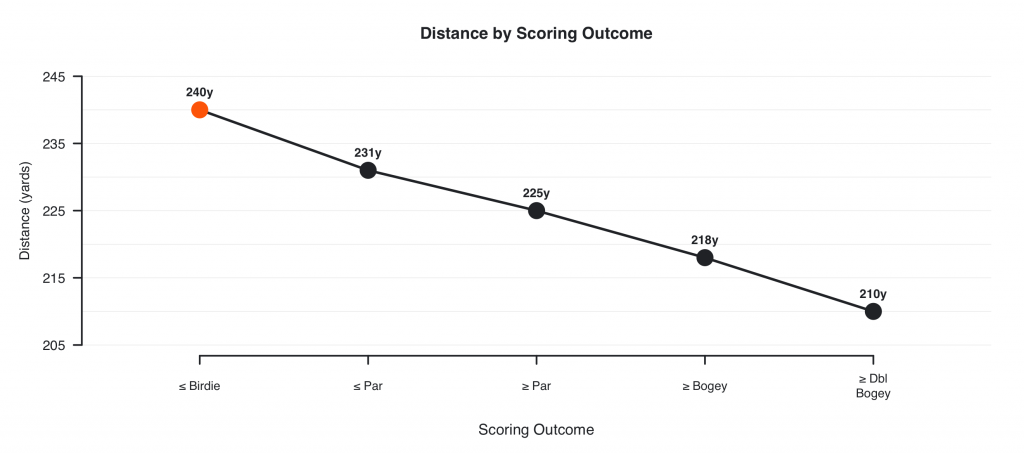
If you’re working toward scratch from 5 handicap, focus on increasing clubhead speed whilst maintaining your current angular accuracy. Those extra 28 yards translate directly into shorter approach shots—turning mid-irons into short irons and creating more realistic birdie chances. Your accuracy is already elite; now it’s about adding power without sacrificing control.
TRACK YOUR STATS VS THESE BENCHMARKS
Knowing where you stand against 5 handicap benchmarks is the first step. Understanding exactly which skills will move you toward your target handicap is step two. Break X Golf uses your actual playing stats to build personalised practice plans that target your biggest scoring opportunities—whether that’s gaining 10 yards off the tee, tightening your dispersion, or improving your short game to capitalise on the birdie chances extra distance creates.
